Petition to preserve University Botanic Gardens Ljubljana, which has been operating since 1810.
Dear, with the petition Let's preserve the University Botanic Garden of Ljubljana, we want to preserve the historic Botanic Garden and realize its expansion in a new location. The University Botanic Gardens Ljubljana has been operating continuously since 1810. This is the second time that Slovenian Railways has cut the Botanic Garden since 1974. At that time, the garden lost 0.3 ha of land, and with this it was deprived of the possibility of expansion in this place. The construction of the second track to Ivančna Gorica will again take away a significant part of the land from the garden along the entire length of the track, which runs along one of the longest sides of the garden. The construction thus destroy the old administrative building from 1897, which today houses a valuable garden library and the Primula tea house, where visitors to the garden can take a break and refresh themselves and thus enjoy the Garden for a longer time. The Garden will lose some of the oldest trees: Metasequia glyptostroboides, which represents one of the first genotypes that arrived in Europe and, according to experts of this species, is truly unique. The oldest Ginkgo biloba in Slovenia from the very beginnings of the garden, a series of old trees from the genus Abies and many other equally valuable trees for the Garden in this part will fall. All Japanese cherries are also falling, a gift from the State of Japan in 1999.
In 1974, a written commitment was given (documents signed, plans drawn up) for a new Botanic Garden under Rožnik on Večna pot, where the faculty campus is today. The greenhouse and the entrance building, which had already been built, were demolished during the Covid-19 pandemic and the building of the National Institute of Biology, which was opened this year, was built there. The garden thus lost all the facilities already built for it on this site. Please support our Botanic Garden! Other solutions are possible that do not cut the Garden, and at the same time we demand that at the new location, where a new and expanded Botanic Garden is foreseen in the plans of the city of Ljubljana, this should be realized as soon as possible by the construction of new buildings intended for the garden.
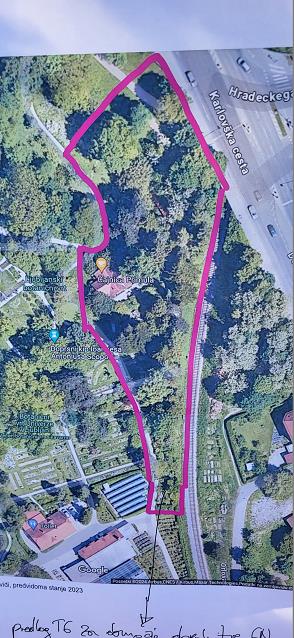
Universtiy Botanic Gardens is protected as Cultural Monument of National Importance (Odlok o razglasitvi Botaničnega vrta v Ljubljani za kulturni spomenik državnega pomena, Uradni list RS, št. 103/2008) and as natural attraction (Odlok o razglasitvi Ljubljanskega botaničnega vrta za naravno znamenitost, Uradni list RS, št. 8/91), but sadly its seems like this is not important enough.
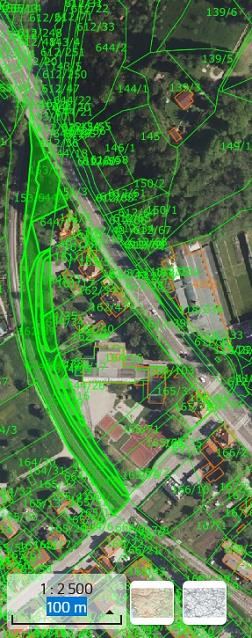
This is display of the plots that are in the property of Republic Slovenia, Slovenian railways and MOL (The city municipality of Ljubljana) that can be used as place for the second track. In this scenario our gardens will not be destroyed. From Orlova cesta, everything would have to be done only on the other side of the track. It would be only necesary to move road, that goes from house (Dolenjska cesta 14- plot 1695 644/33 and 1695 644/34, that are property of Slovenian railways) and also existing track can be moved futher of botanic gardens. In this scenario Botanic Gardens could also get back the land that was lost in the 1974. Since then there is a lot of unused land.
The second railway track could completely avoid reduction of the Botanic Gardens. In addition, the plots on the other side are already all properly owned, as mentioned earlier
Link to petition which you can sign!
QR code:
Demolition of the greenhouse of Mediterranean plants and succulents at the new location of the Botanic Garden (Večna pot) september 2020
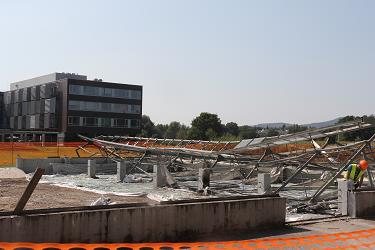
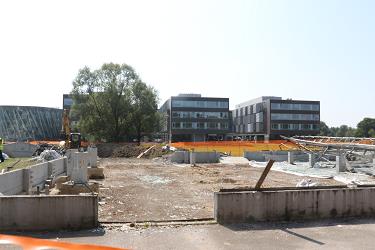
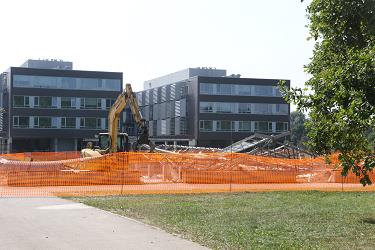
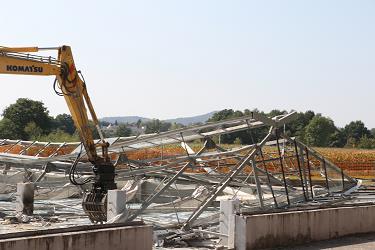
Demolition of the entrance building at the new location of the Botanic Garden (Večna pot)
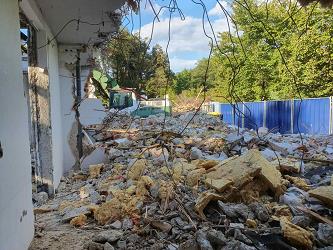
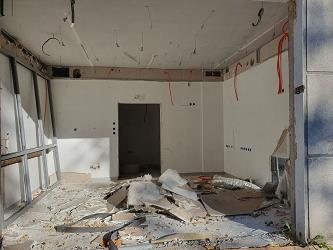
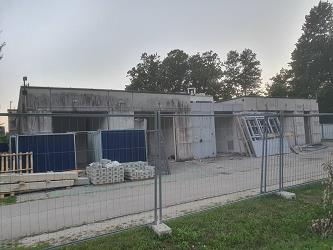
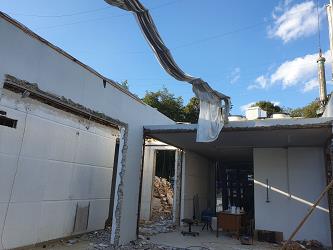
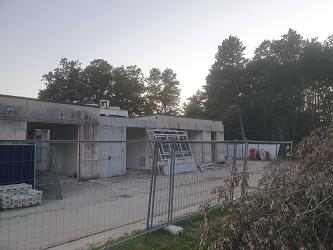
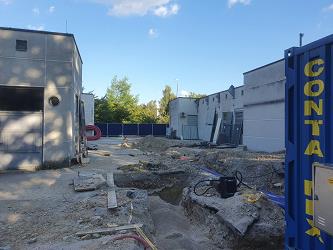
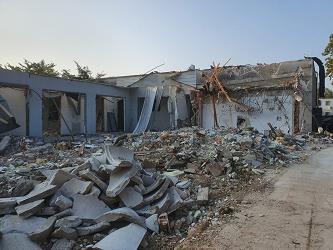
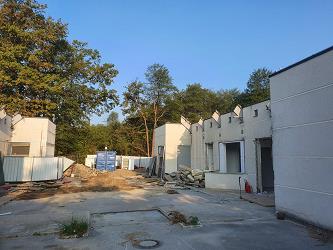
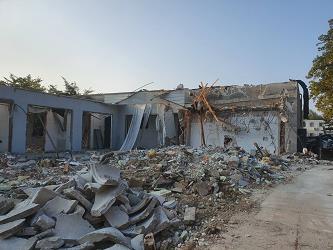
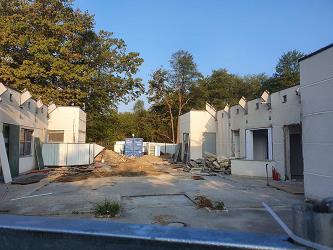
Agreement on the regulation of mutual relations
Archived articles
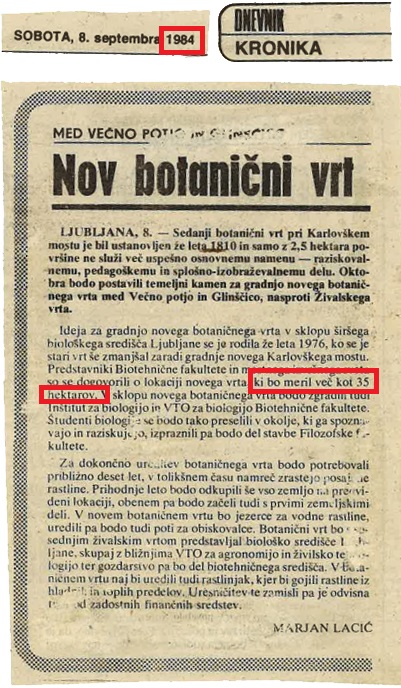
Letters of support
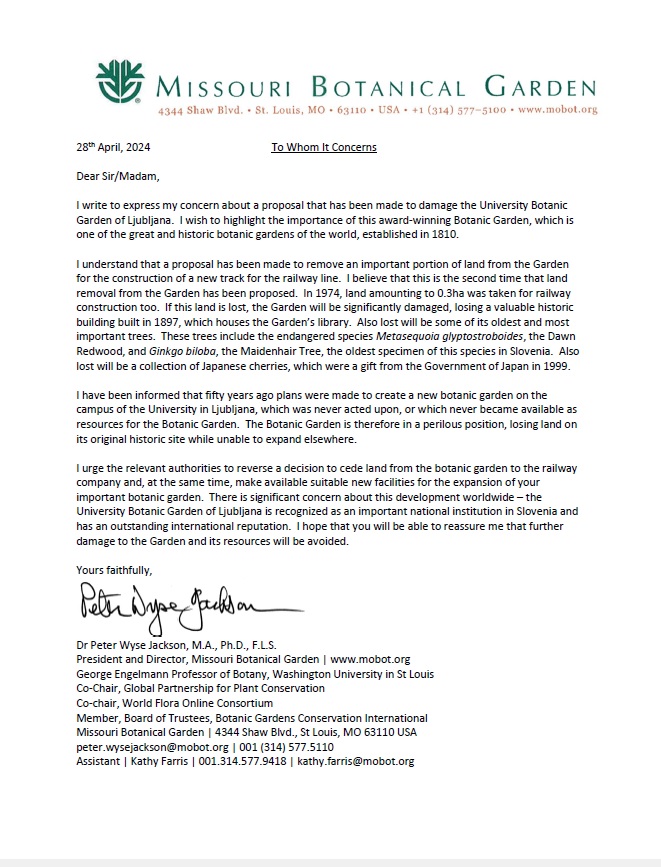
Ira Zorko
In defence of the Ljubljana Botanical Garden
Through a petition initiated by its management, headed by the first signatory, its director Dr Jože Bavcon, the public was informed that, as part of the modernisation of the Dolenjska railway, an intervention was planned that would severely damage the University of Ljubljana Botanical Garden, which has already been threatened on several occasions. It is a cultural monument of national importance, the oldest botanical garden in South-Eastern Europe, an institution that has been in continuous operation for two centuries and was one of the first in the world to be accredited by the World Organisation of Botanical Gardens. The fact that the state Directorate for Infrastructure, either out of ignorance or narrow-minded carelessness, has no regard for such a precious asset from the outset is testimony to the fact that there is nothing sacred in our dear homeland, which has already suffered so many devaluations in relation to its cultural and natural heritage. For the second track of the Dolenjska railway line, the planners could have easily avoided the Botanical Garden and used the free land on the other side of the existing route, land which is owned by the Republic of Slovenia, Slovenian Railways and the Ministry of Transport and Tourism. Other options for a solution are opened up by the strategic assessments of the bypass lines, which, due to their delayed and chaotic approach are being carried out in parallel with the planned modernisation of the line. For example, the Director General of Slovenian Railways recently announced the study and possible adoption of a south-eastern bypass line. According to this proposal, the connection of the Dolenjska railway to the main station would take place elsewhere, allowing the Botanical Garden to be given back the land that was taken away years ago, and possibly a tram line to run to and past it, instead of being threatened with a devastating intervention. The first public reaction of the planners was also unusual – they stated that they were aware of the importance of the Botanical Garden and had therefore included an arborist on the team. As if the presence of an arborist on the team should reassure the anxious public, because from now on she will ensure that nothing bad happens to the Botanical Garden, a cultural monument of national importance. Is this not a clear sign of a move away from the traditional desire to achieve the ideal of the universal human being and the social efforts needed to preserve and promote sound human judgement in each other, alongside individual talents and particularities, in relation to the whole? When some potential development and a national cultural treasure are in conflict in such a banal and at the same time fatal way, we may ask where are we going, and are the direction and manner of our development the right ones? Especially if what is going to threaten what is precious in society is part of the so-called infrastructure, something that, according to the meaning of the word, is supposed to serve the wider interests of society. But is this still the case in our modern world in which everything seems to have been turned upside down? Is infrastructure really infrastructure today, or has it quietly and gradually grown to such an extent that it has come to dominate the basis of life? Just as money seems to have gone from being a means of achieving our aspirations to becoming the very goal of our actions, since the economy is now placed above and in place of culture, and as quantity is increasingly replacing quality, even in the most sensitive areas of our lives, in a fatal way. Already at the beginning of the twentieth century, the famous German scientist Heisenberg observed that human civilisation was becoming more and more like a huge iron ship whose compass was guided only by its hull and no longer by the starry sky and North Star. In such a state of affairs, can we still properly distinguish between cause and effect? Is the increase in gases such as CO2 the cause of climate change, or is it the result of overheating, which is occurring as forests are continually reduced and built-up areas increase? Can we count on success if we replace meadows and grassland with fields of solar panels? What is the point and objective of human development? Over two hundred years ago one of the pioneers of the natural sciences, Alexander von Humboldt, stressed the importance of the planet's green mantle, noting that its shrinking was causing temperatures to rise. The exhibition on this famous and, in his time, very popular explorer and scientist, has been accompanying and inspiring visitors to the Ljubljana Botanical Garden since the centenary of the University in 2019. Through sustained scientific work, cultural and artistic events, the management of the Garden has ensured that the atmosphere of thought that gave rise to its creation has been present to this day. On 18 June 1795, Goethe wrote to Humboldt: “Tell me about your experiences and be assured of my vital interest. Your observations begin with the Element and mine with the Gestalt [i.e. the whole, author's note], so we should hasten to meet in the middle." Both Goethe and Humboldt were still seeking ways to overcome the antipathies between science and the humanities, and there was a strong bond of mutual respect and admiration between them. It is not surprising, therefore, that Goethe, great poet that he was, still wanted to be remembered by mankind as a naturalist. Even after he had become acquainted with the first technical devices, he insisted that there was no instrument more sensitive and precise for observing the mysteries of life than the human being. He was convinced that the meaning and essence of development on Earth was the human being, not tools and technologies. He discovered through his own example that the man who devotes himself to the profound observation and beholding of the directly accessible phenomena of life, awakens the capacity to discover the invisible forces behind the constant transformation of matter. Moreover, Goethe believed that these were the same secret forces that were also within himself, inviting him not only to gather knowledge from the outside, through external phenomena, but also from within, to gather knowledge and self-knowledge.
The first seedlings allegedly arrived at the Botanical Garden from the Lyceum Garden. Prešeren, who later went to school there and was among the first to write about the temptations of the Iron Road, was 10 years old at the time. Before that, there was a monastery and a church on the site, and today it is Ljubljana's Central Market. There, too, the rich spiritual history of our community, which is present there, is now the subject of controversies. There, too, some are convinced that the precious material traces and evidence of the past can be replaced without harm by infrastructure, for which there is plenty of other space. Once it was monasteries that kept the light of wisdom and hope alive in the world during the difficult times of the ancient world's collapse, and from their seeds grew the European cities of today; today it is the places that people are ready to come together and defend, conscious of the importance of human development at stake and out of concern for the whole. Concern for the whole, of which the human being is an indispensable part, is opposed to actions which, through narrow-mindedness, parochialism or bias, threaten that whole. Concern for the whole extends man himself to the level of the whole, just as narrow interests and narrow-mindedness shrink and weaken us in the long run. There are no enemies in understanding and caring for the whole. There are only elements and forces that are out of place in time and space. As I said, there is plenty of room for the extension of the Dolenjska line on the land to the north of the Botanical Garden, which is already owned by the state and the city. Other and perhaps more comprehensive solutions are possible if decision-makers are prepared to listen regularly and are able to engage in dialogue with those who think about the whole rather than the immediate, vested interests. Good, creative solutions emerge from constraints and respect. So let me repeat: the Ljubljana Botanical Garden, as a cultural monument of national importance, the oldest botanical garden in South-Eastern Europe, an institution that was among the first in the world to receive accreditation from the World Organisation of Botanical Gardens, is such a constraint. It has grown out of the noble wonder and harmony between man and nature, and is deeply rooted in the hearts of amateurs who admire the beauty of life, in its shadows and paths there is so much gratitude to the ancestors and those who nurture it today, in its canopy there is so much patriotism and cosmopolitanism, that it is impossible for people who know it to allow anything bad to happen to it. If not before, then when they are threatened, one realises that these are places that inspire and stimulate feeling, thought and action, that by their example they put us in a different role, in a much more harmonious relationship with the very essence of life.
News about petition on BGCI (Botanic Gardens Conservation International) website







